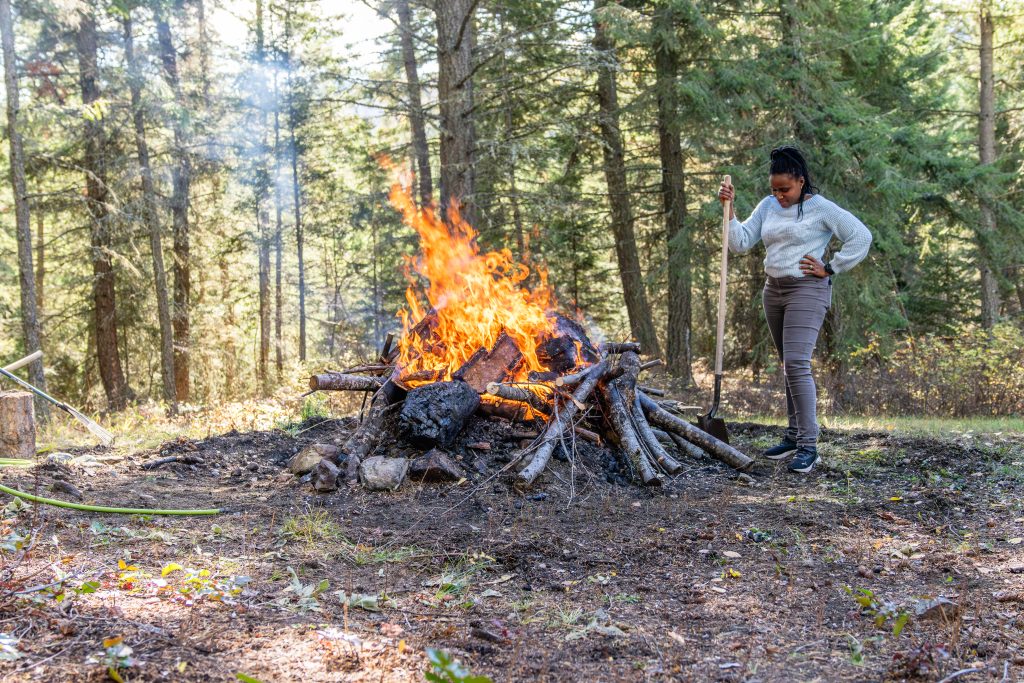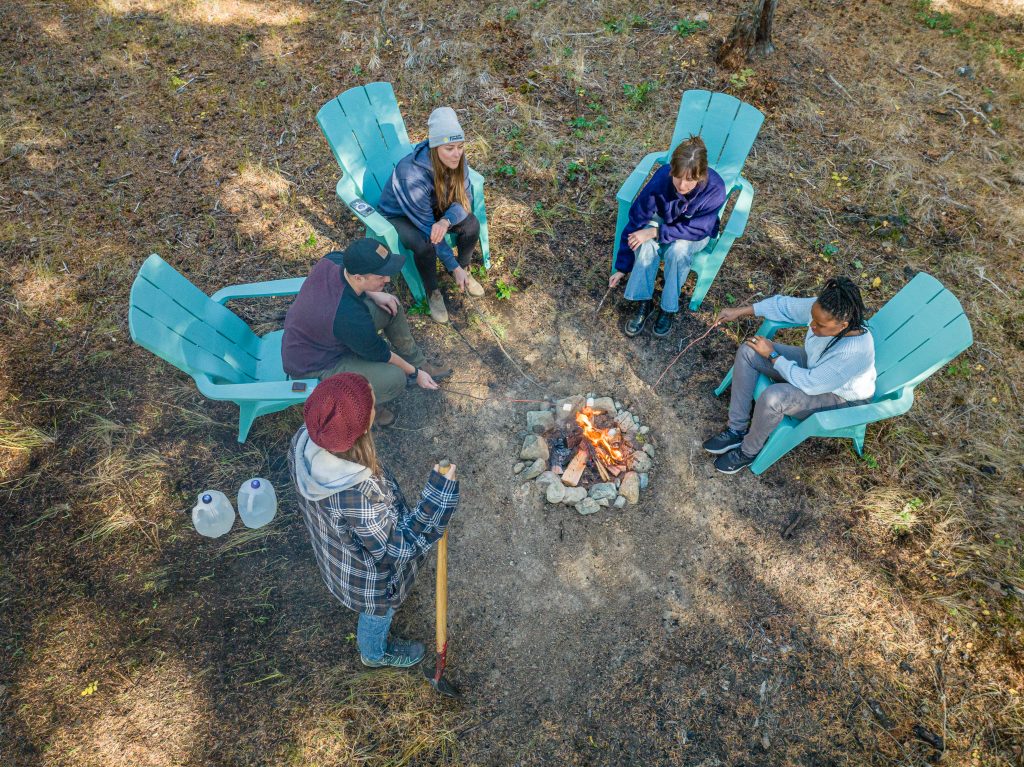
With many parts of B.C. experiencing an unseasonably dry spring, anyone conducting open burning will need to take extra care to ensure their burn doesn’t get out of control.
When done responsibly, open burning is a valuable tool for homeowners, farmers and resource managers to help clear land. The BC Wildfire Service often uses open burning to help reduce fuels on crown land to reduce the risk of wildfire. However, when open burning is performed by landowners under unsafe conditions, open burning can escape and result in wildfire.
Category 2 open burns are one of the leading causes of wildfire in spring
While lightning is the primary cause of wildfires in summer, human activity causes most spring wildfires. Incident investigations conducted by the BC Wildfire Service find that Category 2 open burning is a leading cause of spring fires. In cases where a spring open burn has escaped and become a wildfire, there is almost always some element of human error.
Some people conducting spring open burns skip required safety measures, because they believe it is still too cold or wet for the fire to escape. In spring it is extremely easy for the area around a burn site to ignite and spread quickly because grass and other fine fuels are quite dry after the snow melts, but vegetation has not yet begun to green up.
Early spring burns that escape containment to become wildfires typically have one or more of the following factors in common:
- The burn is left unattended, even for a short duration
- Failure to plan for wind behaviour or venting conditions
- Failure to carefully select and prepare the burn site or manage the size of the burn pile
- Failure to have fire suppression tools handy
- Failure to ensure the fire has been completely extinguished before leaving the site
Open Burning 101: Understanding open burning categories
Open burning is classified into four categories, which cover everything from recreational and ceremonial fires to industrial and resource management fires.
Category 1

- Single fire no larger than .5 meters high by .5 meters wide
- Typically, used for recreational or first nation’s ceremonial purposes
- Learn more about Category 1 fires
Category 2
- One or two burn piles with fuel not exceeding 2 metres in height and 3 metres in width
- The burning of stubble or grass over an area that does not exceed .2 hectares
- Examples may include homeowners burning leaves and windfall, a developer burning slash to clear land for construction, or a farmer clearing a small field
- Category 2 fires are one of the leading causes of wildfire during the spring
- Learn more about Category 2 fires
Category 3
- Three or more open fires with fuel not exceeding 2 metres in height and 3 metres in width
- Or one or more piles, each exceeding 2 metres in height and 3 metres in length
- Examples may include forestry technicians burning slash after timber harvesting or a rancher burning pasture to improve grazing
- Learn more about Category 3 fires
Category 4
This is a resource management fire (Cultural or Prescribed) conducted to achieve a range of land stewardship objectives, which may include wildfire risk reduction or revitalization of ecosystem health.
Learn more about Cultural and Prescribed fire.
Before You Burn: Tips to avoid having a really bad day
- Know what category of open burn you will be conducting
- Confirm that open burning is currently allowed and whether there are any restrictions in your area
- If your burn is a Category 3 fire, you must obtain a burn registration number from the Open Fire Tracking System by calling 1-888-797-1717 or emailing hpr.1800@gov.bc. This allows the BC Wildfire Service to track regulated burning across BC, manage firefighting resources and minimize false reports of wildfires
- Check the weather and venting conditions in your area. Don’t burn if venting conditions are poor or fair, or wind speed is expected to exceed 10 km per hour, or gusts are forecast (Pro tip, wind typically picks up in the early morning and late afternoon)
- Establish a fuel break around the fire, a fuel break is a strip of land cleared down to mineral soil to prevent fire spread
- Ensure at least one person is always monitoring the fire to prevent it from spreading
- Have proper suppression tools on hand, for example: shovel, pulaski, or water source
- Ensure the fire is fully extinguished and the site is cool to the touch before leaving it unattended
Violators will be prosecuted
Anyone found in contravention of an open-burning prohibition may be issued a ticket for $1,150, required to pay an administrative penalty of up to $10,000 or, if convicted in court, fined up to $100,000 and/or sentenced to one year in jail. If the contravention causes or contributes to a wildfire, the person responsible may be ordered to pay all firefighting and associated costs.
Reporting
If you see a fire and have concerns about whether it’s a wildfire, unattended campfire, or open burning violation, call 1800.663.555 toll-free or *5555 on a cellphone to report.
Resources to Help You Burn Responsibly
Open Burning Best Practices for Farmers and Ranchers
https://firesmartbc.ca/resource/open-burning-practices-for-farmers-and-ranchers/
Bans and restrictions
https://www2.gov.bc.ca/gov/content/safety/wildfire-status/prevention/fire-bans-and-restrictions
Register Your Burn
https://www2.gov.bc.ca/gov/content/safety/wildfire-status/prevention/fire-bans-and-restrictions/ofts-burn-registration
Wind Conditions In Your Area
https://www.windy.com/
Venting Index
https://www.env.gov.bc.ca/epd/epdpa/venting/
Open Burning Smoke Regulation
https://www2.gov.bc.ca/gov/content/environment/air-land-water/air/air-pollution/smoke-burning/regulations/openburningregulation
BC Drought Info Portal
https://governmentofbc.maps.arcgis.com/apps/MapSeries/index.html?appid=838d533d8062411c820eef50b08f7ebc
Causes of B.C. Wildfires
https://www2.gov.bc.ca/gov/content/safety/wildfire-status/wildfire-response/what-causes-wildfire
